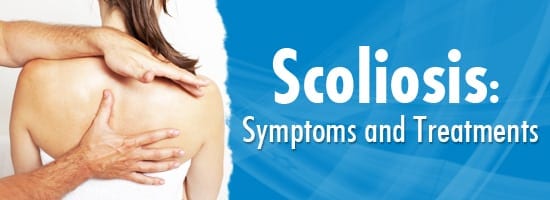
A sideways curvature of the spine, scoliosis typically develops during the growth spurt that occurs just before a child reaches puberty.
What causes scoliosis?
The cause of many cases of scoliosis is unknown, but the condition appears to be related to genetics. Sometimes, scoliosis can be a result of other factors, such as muscular dystrophy, birth defects, and cerebral palsy.
What are the symptoms of scoliosis?
Sometimes, the curve in the spine is visible to the naked eye. But there are other symptoms that can be present with the condition, such as uneven shoulders and hips. If the condition is severe, back pain and trouble breathing can occur.
When should a doctor be seen?
Fortunately, the majority of scoliosis cases are mild. In this situation, x-rays will be used to monitor the curve and make sure it doesn’t get worse. It’s a good idea to see a spine care professional if you suspect that yours or your child’s spine is curved to make sure that no intervention is needed. Regular monitoring is important because spinal deformities can get more severe throughout childhood. If the curve becomes severe, it can make it difficult for the lungs to function properly with the reduced space available in the chest.
Scoliosis can develop so gradually that you may not notice it right away. It might be spotted in a well-child visit or routine physical. Diagnostic testing to confirm scoliosis includes x-rays and sometimes MRIs or CT scans if the doctor wants to rule out an underlying cause.
How is scoliosis treated?
Treatments are typically not needed for mild cases. For more severe cases of scoliosis, a back brace might be necessary while the bones are growing in to reduce the curve’s progression. Surgery such as spinal fusion can also be used to straighten the spine or to keep the curve from getting worse. Finally, chiropractic manipulation can be beneficial.

